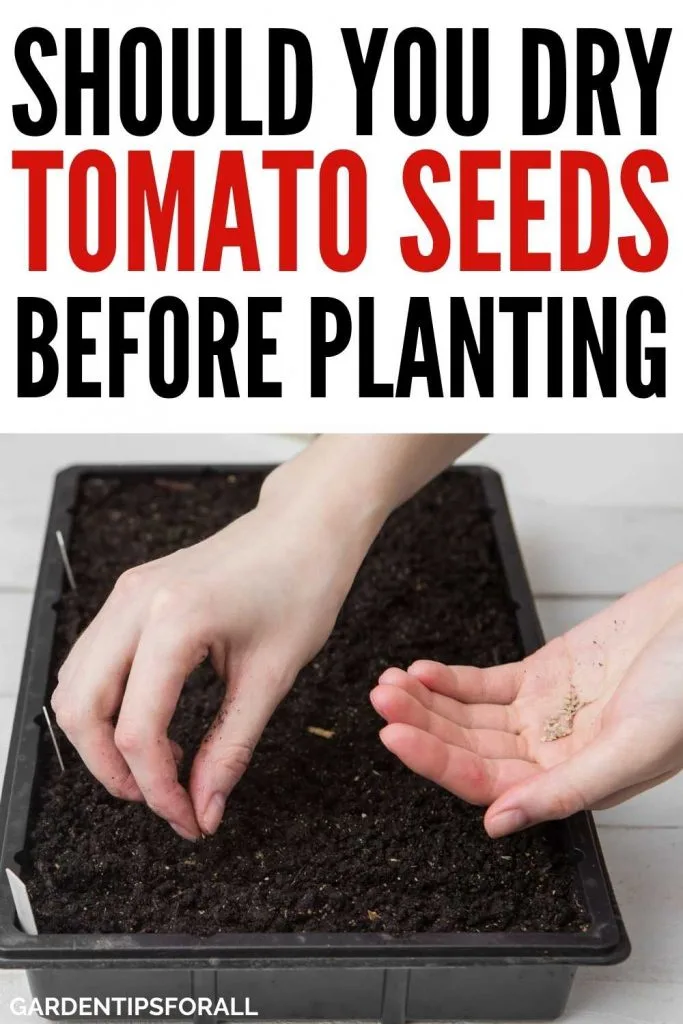Do You Have to Dry Tomato Seeds Before Planting?
Nothing beats the taste of fresh tomatoes from your home garden. That is why you should start planting tomatoes when the climate is favorable to enjoy delicious fruit rather than buying from the stores.
You can choose to purchase the seeds from the store, or you can use fresh tomato seeds. But, do you have to dry tomato seeds before planting?
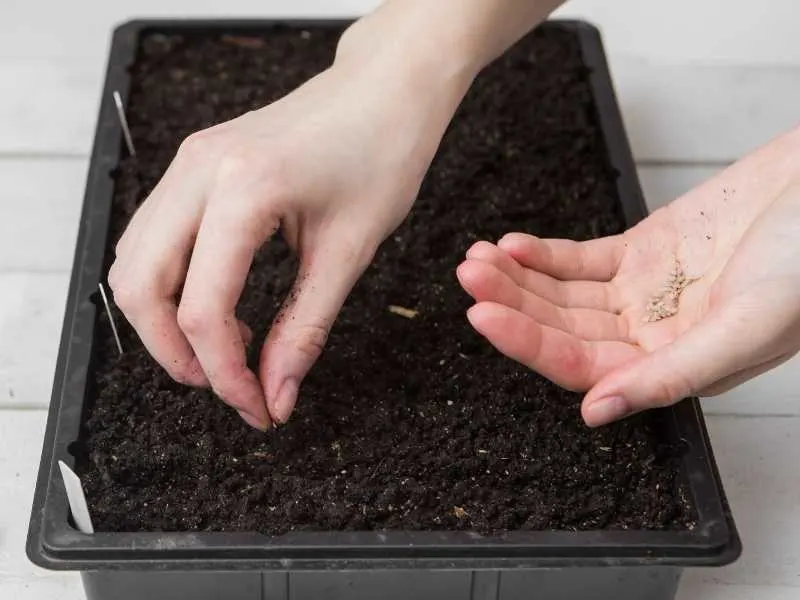
You don’t have to dry tomato seeds before planting. Tomato seeds can grow even when they’re within the fruit. However, drying can prevent any diseases and pests that may attack wet seeds. Drying can also help prevent stunted growth.
If you plan on drying your seeds before planting, follow the steps below for a successful outcome.
Related Articles:
How Do You Prepare and Save Tomato Seeds?
Seeds from a ripe and healthy tomato are best for saving. You can opt to dry them on a napkin or ferment the seeds. Fermentation is the best way to preserve seeds since they will endure for an extended period of up to six years.
Fermenting also eliminates germination disruptions and the jellylike sheath from seeds and perhaps even cures some diseases.
- Always wash the tomatoes you are planning to collect the seeds from after harvesting. Preferably, use a bucket filled with water and clean the tomatoes therein. Cut off any damaged parts of the tomatoes.
- After all the tomatoes are washed, cut them open and squeeze the seeds with the juice and pulp into a container. Preferably, hold the tomato upright and cut open the bottom part. Use your fingers to extract the pulp with seeds from the middle column.
- Make sure to use a container with a lid. Do not add any water as diluting the tomato liquid will inhibit fermentation. Label and set aside the containers for about three days in 70°f (21°c).
- Every day, make a habit of stirring the fermenting juice to mix the floating pulpy substance. If you fail to stir, mold is likely to build up and discolor the seeds.
- Decant after three days. Pour out the pulpy material, and be careful not to pour out the seeds as well. Use a larger container than what you had. One that will be able to hold everything even after you add water. Repeat the process of adding and pouring out the water for like 2-3 times or until the seeds are clean.
- Pour the seeds on a window screen or a fine mesh. Lightly spray the seeds with water to clean off remaining debris or gel.
- Label the window screens with the date of harvest and tomato seed type.
- Allow the seeds to dry for a maximum of 6 days at room temperature. Make sure you spread the seeds out with your fingers every day to avoid them clumping together.
- Finally, bag the seeds by storing them in zip-lock bags in a cool, dry, and dark place. Refrigeration is not necessary but if you have to, avoid freezing the seeds.
When Is The Best Time To Plant Tomato Seeds?
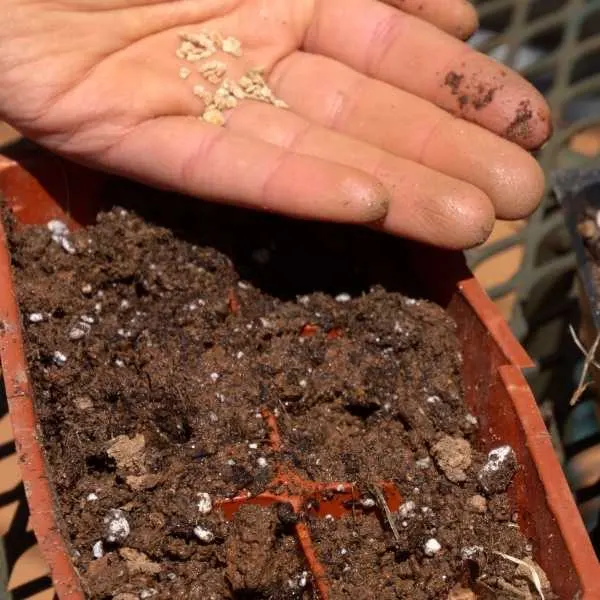
Even though you want to plant tomatoes so bad, timing is critical. But the best planting time depends on where you live and the weather conditions.
However, if you are a first-time gardener and have no clue on these, there are few guidelines to help you establish the perfect time.
Tomatoes are warm-weather plants. They may not produce as expected if you grow them in cold seasons. And you’ll also be exposing them to early frosts, which may kill them. Tomatoes cannot grow in conditions lower than 50 f. (10 c.).
When you notice the night temperatures consistently staying at 50 f. (10 c.), it’s a good sign of the right planting period. Why? Because tomatoes will not produce fruit until the temperatures are 55 f. /10 c at night.
Therefore, planting when the temperatures are 50 f. (10 c.) will allow them more time to mature well before fruiting.
Secondly, examine the soil temperature. The best soil temperature for tomato planting should be 60 f. (16 c.). How do you tell the soil temperature?
An easy, quick way is merely poking a finger in the soil to feel the warmth at the touch.
If your finger remains in the ground for over a minute without feeling odd, then the soil is not conducive or warm enough for tomato growing. Ideally, you can use a soil thermometer to measure the right temperature.
Generally, the best time to grow tomato seeds is about 6-8 weeks before the last frost season in your area. Then, you can plant the seedlings outdoors, ideally two weeks after the frost date is through, for maximum sun exposure.
How do You Grow Tomatoes from Fresh Tomato Seeds?
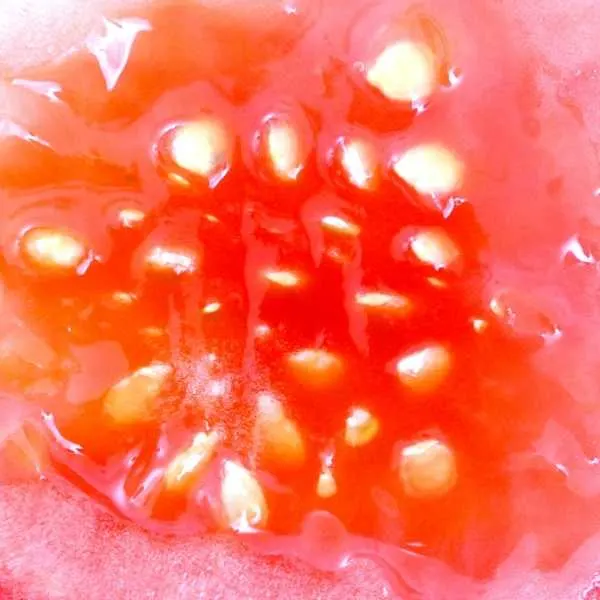
Bellow is a step-by-step guide on how to grow tomatoes from fresh tomato seeds.
- Take out the seeds by squeezing from a ripe tomato and soak them for about 14 hours in lukewarm water. Then, dry them on a napkin or paper towel and store them in a cool, dry place and plant them in seven days.
- Fill ¾ of your seedling pots with a high-grade potting mixture. Bear in mind that the potting mix is not the same as potting soil. The potting mix is lightweight than soil and holds compost, peat moss, perlite, sand, and vermiculite. It doesn’t become soggy but embraces moisture. Make sure the seed pots are well-drained. Water the mix sparingly before planting the tomato seeds.
- In each small pot, plant about two or three seeds. Remember that not every seed sprouts; hence it becomes effortless to cut back the pots later. Gently press each seed into the soil about ¼ inch deep.
- To maintain the moisture, make sure you cover the seed pots using a plastic wrap. Then, place the jars out in a warm area away from direct sun for seven days for germination to begin.
- Do a routine check for sprouts. If you see any shoots emerging above the potting mix, remove the plastic wrap. Spray the sprouts carefully with water, so as not to damage them as they are young and delicate.
- On the first day after sprouting, place the pots on a window sill at 18°C (64°F) and allow 3 hours of direct sun. As days go by, gradually increase the length of sunlight exposure by 10 minutes until you reach a maximum of 6 hours of sun daily. The slow exposure to the sun prevents tomato plants from being damaged.
- Touch the potting mix daily to check if it’s dry or wet. If it feels dry to touch, water each seedling cautiously. Overwatering will cause root rots, which will eventually kill the seedlings.
- In case more than two seeds sprout in a single pot, thin out the weaker shoots when they get to 2 inches tall. Only allow one healthy and robust seedling to stay in each jar.
- Transfer a seedling to a bigger pot that grows to about 3 inches tall and has more than four leaves. Also, use a pot that is well-drained with enough holes for draining excess water. You can also use a transparent jar, which will help you monitor the rots.
- Conversely, when the weather is perfect, you can transfer the tomato plant outside under full sun exposure. Use a tomato cage for support as it grows bigger. To be safe and protect your tomatoes, you can grow herbs such as basil nearby to deter pests from attacking them.
How Do You Make Tomato Seeds Grow Faster?
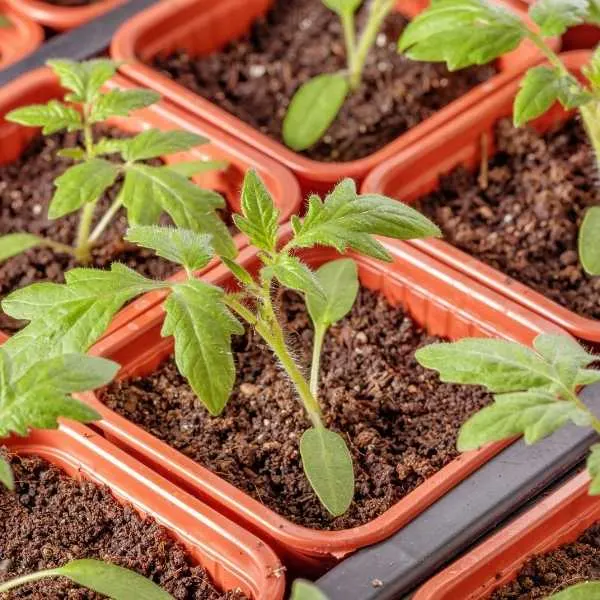
When the growing season begins, gardeners anticipate the harvest of delicious tomatoes. Though the cold temperatures tend to slow down the growth, there are ways you can accelerate the long-awaited tomato harvest.
You may also want to read this article on the fast growing vegetables to grow in your garden.
Select a Quick Maturing Variety
A fast-growing tomato seed will do you justice if you can’t wait for a long time to harvest. Preferably grow the “bloody butcher” tomato, which will mature in about 55 days for harvest.
When buying tomato seeds, select a variety that grows faster. Check maturity period before purchase.
Warm Up the Soil
Without a doubt, tomatoes love warm temperatures and detest chilly conditions. Pull back the mulch in your garden beds and place a plastic sheet over the bed to expose it to the sun.
The soil in raised beds and containers warm up faster than the rest, so they are ideal for tomatoes and other heat-loving plants.
Harden the Plant
About a week before transplanting your seedlings outside, take the plant out under partial shade, then back in during the night.
In 10 days of gradual exposure, the tomato plant will harden and quickly adapt to faster growth outdoors.
Protect Your Plant from Wind and Chill
Wind causes the soil’s moisture to dry up and can also break the young branches. It would be ideal if you planted your tomatoes in areas that receive more sunlight and are less windy.
Do not Mulch Immediately
For young plants, leave the soil bare for some months. This way, you will allow the sun to warm the soil. But when the summer is at its peak, apply the mulch to preserve moisture in the ground.
Support Your Plant
Drooping stems and extensive foliage shadow the ripening fruit, which slows down maturing. Use supports like cages and ladders to keep the plant upright.
Conclusion
Even though you don’t have to dry tomato seeds before planting, doing so will lead to better results. It also gives you some assurance of good quality seeds. However, if you’re not sure how to go about drying or fermenting your seeds, there’s nothing wrong with purchasing seeds from the store. Just make sure that you buy from a certified supplier who also has a good reputation.
